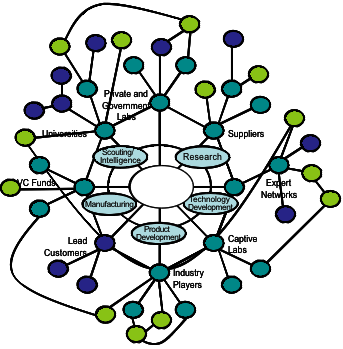Why your browser wallet should feel like a native app (and how signing, DeFi, and staking get you there)
So I was poking around a few extensions the other night and ended up obsessing over UX. Wow! The weird thing was how a small delay in signing a transaction made the whole flow feel fragile. My instinct said the tech was fine, but the experience was off—very very important detail for everyday users. After a few tests I started thinking about the tradeoffs between security, convenience, and trust, and the rest of the week sort of spiraled into an experiment.
Whoa! Browser wallets are the front door to DeFi for most people. Seriously? Yeah. You can open a tab and suddenly you’re one click away from liquidity pools, yield farms, and staking dashboards. But that one click is also where most people bail, because signing popups feel like cryptic permission slips, and on mobile they feel clunky as hell.
Here’s the thing. When I first tried an in-browser flow I thought, okay, this is straightforward. Initially I thought friction was inevitable, but then I realized that smart UI plus predictable signing can reduce cognitive load dramatically. Actually, wait—let me rephrase that: predictable signing paired with clear context reduces fear, which in turn increases adoption. On one hand you want minimal prompts, though actually you can’t avoid explicit consent for risky actions; on the other hand you can package those prompts so they read like a normal transaction in a bank app.
Check this out—I’ve been using various extensions as a browser power user (yeah, I have way too many), and the ones that nailed integration did three things well. Short, clear transaction descriptions. Medium, immediate confirmation feedback. Long, a persistent connection model that made re-authorizing seamless across dapps without feeling like an open invitation to hackers who might exploit stale sessions. My experience is anecdotal, obviously, but patterns emerged fast.
Really? You trust an extension that much? Hmm… I’m biased, but trust is built, not granted. You can design a wallet that educates in context; a tooltip here, a simple warning there, and fewer scary words like “nonce” and “gas price” thrown at new users. Somethin’ as small as a smiley icon for successful staking makes people breathe easier.

Signing transactions without the freak-out
Signing is the hinge. If signing is confusing, users freeze. Whoa! The signature prompt should answer three quick questions: who is requesting, what exactly will change, and what risk does the user accept. Medium-length prompts that summarize the action in plain English work better than terse, technical ones. Long, when developers provide readable transaction metadata and a chaining model (so approvals are scoped and minimal), the UX becomes both safer and faster—users can approve repetitive routine actions while still requiring explicit consent for novel or risky requests.
Okay, so check this out—wallet extensions that integrate tightly with dapps can do things browsers can’t — they can surface richer context in the signing flow, like token logos, human-readable descriptions, and a history of similar transactions. Wow! This reduces accidental approvals. My instinct said any added context helps, but I ran into cases where too much info actually confused novice users (paradox of choice, anyone?).
On one hand you want to display full contract data, though actually most people don’t parse that. So the compromise is layered UI: a short human-readable summary, then a collapsible technical section for power users. Seriously? It works. You cater to both beginner and expert without alienating either group. I like that balance.
Staking deserves its own mention because emotionally it feels like “putting money to work.” Hmm… that phrasing matters. For new users, staking should be framed as a goal-driven action: “lock X to earn Y over Z period.” Short sentence. Clear benefit. Long sentence that explains lockups, rewards, and withdrawal delays in plain language, because surprises here cause churn. Also, a tiny risk meter helps—green for low-risk protocols, amber for experimental pools.
I’ll be honest—I’ve had staking flows where the rewards page looked beautiful but the unstake terms were buried in small print. That bugs me. Users should be able to preview their net position after fees and slashing risks, and that preview should fit in a single screen on desktop and mobile. Somethin’ like that saves headaches later.
So where does an extension like the okx wallet extension fit into this? It sits exactly where these design choices are decided—between the browser and the dapp. Integrations that pass readable metadata, support structured signing (so the wallet can show intent), and offer UX patterns for staking and approval management make onboarding smoother. Wow! When a wallet handles session persistence responsibly and surfaces human-readable context, conversions climb.
My take is practical: if you’re building a dapp, don’t assume users understand transaction semantics. Provide intent, simple confirmations, and preview screens. And if you’re choosing a wallet, look for one that prioritizes clear signing and good DeFi primitives. Really? Yes. It matters more than small fee differences when you care about long-term users.
Now, the security side—no, you can’t shortcut it. Long, hardware-backed key management is ideal for high-value flows; medium, software wallets can be hardened with PINs and biometric unlock; short, permission scopes must be minimal. On one hand UX wants fewer interruptions; on the other hand security requires explicit checks. My working solution? Progressive security: low-friction for low-risk tasks, higher assurance for large or sensitive transactions.
Right—let me be clear: that doesn’t mean lazy confirmations. It means smart confirmations. For example, adaptive thresholds where the wallet asks for stronger auth when the user moves above a balance threshold, or when interaction patterns look anomalous. Somethin’ like that raises the bar without annoying users during normal activity.
Common questions
How do I know a signing request is safe?
Look for explicit human-readable intent, the requesting domain, and whether the wallet shows token and contract metadata. If it doesn’t, be more cautious. Also, prefer wallets that let you revoke approvals easily and display a history of what you’ve signed.
Can I stake from a browser extension?
Yes. Many wallets integrate staking flows directly into the extension so you can delegate or stake without leaving your browser. Just check unstake terms, fees, and whether rewards are auto-compounded or manual. If the wallet surfaces those details up front, it’s a good sign.
What should devs send to improve UX?
Send structured metadata for transactions, use human-readable descriptions, and limit approval scopes. Provide a preview of the post-transaction state so wallets can present clear summaries. That collaboration improves conversions and reduces support tickets.


